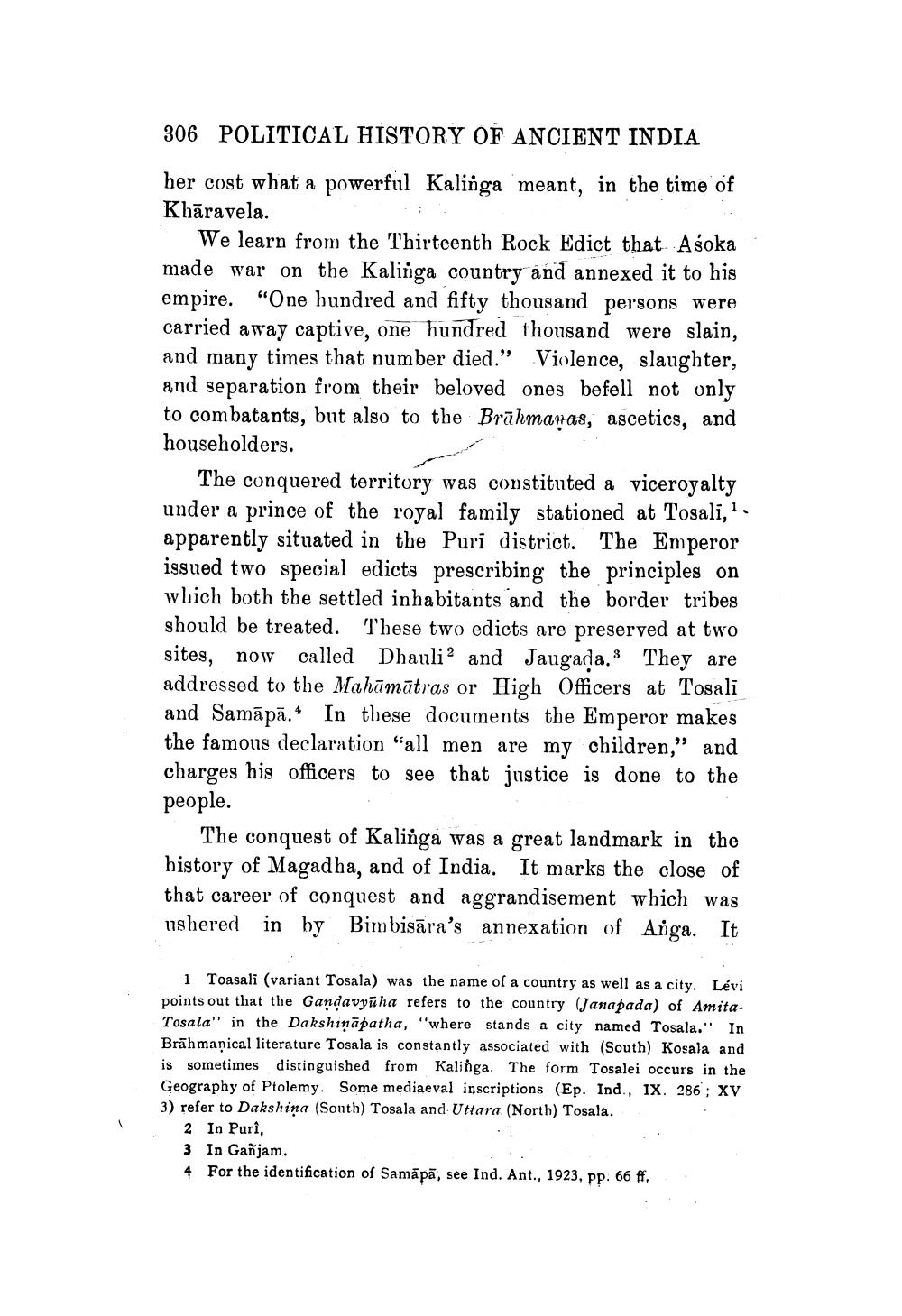________________
306 POLITICAL HISTORY OF ANCIENT INDIA her cost what a powerful Kalinga meant, in the time of Khāravela.
We learn from the Thirteenth Rock Edict that Asoka made war on the Kalinga country and annexed it to his empire. “One hundred and fifty thousand persons were carried away captive, one hundred thousand were slain, and many times that number died.” Violence, slaughter, and separation from their beloved ones befell not only to combatants, but also to the Brāhmanas, ascetics, and householders.
The conquered territory was constituted a viceroyalty under a prince of the royal family stationed at Tosali,?. apparently situated in the Puri district. The Emperor issued two special edicts prescribing the principles on which both the settled inhabitants and the border tribes should be treated. These two edicts are preserved at two sites, now called Dhauli? and Jaugada. They are addressed to the Mahāmātras or High Officers at Tosali and Samāpā.“ In these documents the Emperor makes the famous declaration "all men are my children," and charges his officers to see that justice is done to the people.
The conquest of Kalinga was a great landmark in the history of Magadha, and of India. It marks the close of that career of conquest and aggrandisement which was ushered in by Bimbisāra's annexation of Anga. It
1 Toasali (variant Tosala) was the name of a country as well as a city. Lévi points out that the Gandavyuha refers to the country (Janapada) of AmitaTosala" in the Dakshiņāpatha, "where stands a city named Tosala." In Brāhmanical literature Tosala is constantly associated with (South) Kosala and is sometimes distinguished from Kalinga. The form Tosalei occurs in the Geography of Ptolemy. Some mediaeval inscriptions (Ep. Ind., IX. 286; XV 3) refer to Dakshina (South) Tosala and Uttara (North) Tosala.
. 2 In Purî, 3 In Ganjam. 4 For the identification of Samāpā, see Ind. Ant., 1923, pp. 66 ff.




